Trump may be planning a sharp, extended conflict with California, experts say
Donald Trump does not hide his disdain for California and its perceived progressive values. Now UC Berkeley analysts say he may be planning an offensive against the state that extends from public health and climate to immigration, energy and education.
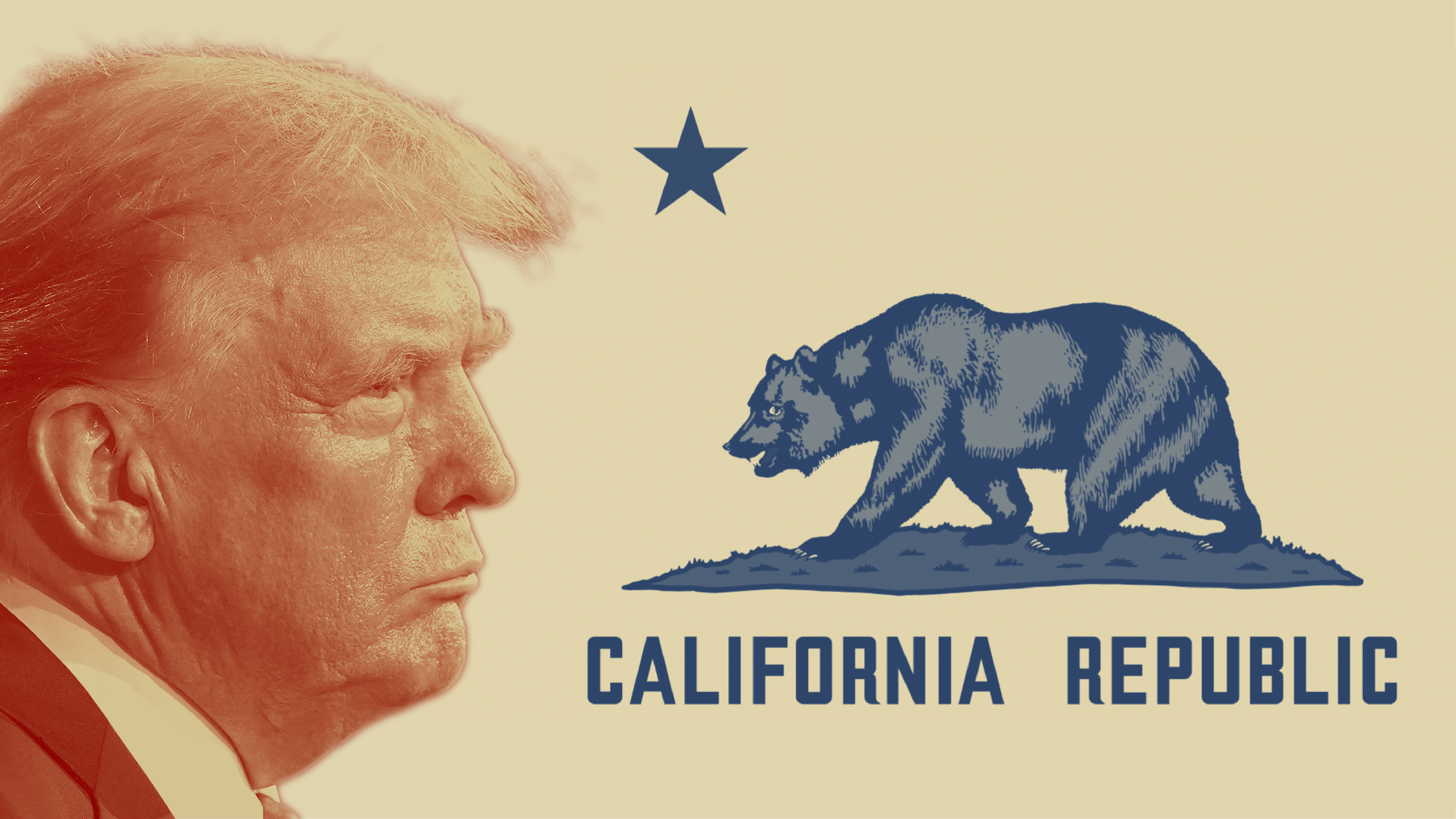
Donald Trump photo by Gerald Herbert / AP. Illustration by Neil Freese
January 10, 2025
President Donald Trump and the state of California engaged in low-grade conflict almost continually during his first term in the White House, and hostilities flashed into the headlines again this week as horrifying wildfires brought death and destruction to Los Angeles. Rather than offer words of consolation and support, Trump attacked Democratic Gov. Gavin Newsom — and blamed him for the fires.
In a social media post, Trump made no mention of intense Santa Ana winds or how climate change might have contributed to the fire. Instead, he claimed that water and environmental policies set by “Gavin Newscum” had precipitated the disaster.
The signals have been worrisome for months, Berkeley scholars say. During last year’s presidential campaign, candidate Trump charged that Democrats had “destroyed” California and rendered San Francisco “not livable.” Inflation, taxes, gas prices, undocumented residents, the cost of utilities — on these measures and others, Trump claimed, California’s policies are “insane.”
While that may reflect the bombast of a political contest, the Berkeley scholars warned in recent interviews that Trump and others in his MAGA movement may be willing to take a more extreme approach in his second term. They could press for policy changes that would threaten Californians of every political persuasion — sometimes putting health and economic security at risk.
He could withhold emergency aid in the event of wildfires, earthquakes or floods. He could slash higher education funding for the state, or aggressively challenge the state’s influential climate and environmental standards. He could attempt to override the state’s protections for reproductive health care and undermine public health policies.

“The data show that this was a change election — there’s no question about that,” said Berkeley political scientist Henry Brady. “People want change, and Trump is going to try to make change. So why pick fights with California? Well, watch Fox News. California is the boogeyman. California has cities out of control. California is doing all these crazy things with climate change. We are the people who have sanctuary cities and the place where people are woke beyond belief.
“Punishing California is something that is, from their perspective, a positive good.”
Brady, like the other Berkeley scholars, said firm predictions about what’s to come are difficult because so much remains unknown. Will Trump unleash revenge against perceived political enemies? Or will he moderate his attacks because California’s economy is such a huge portion of the nation’s economy, or to protect donors in Silicon Valley or supporters in other conservative areas of the state?
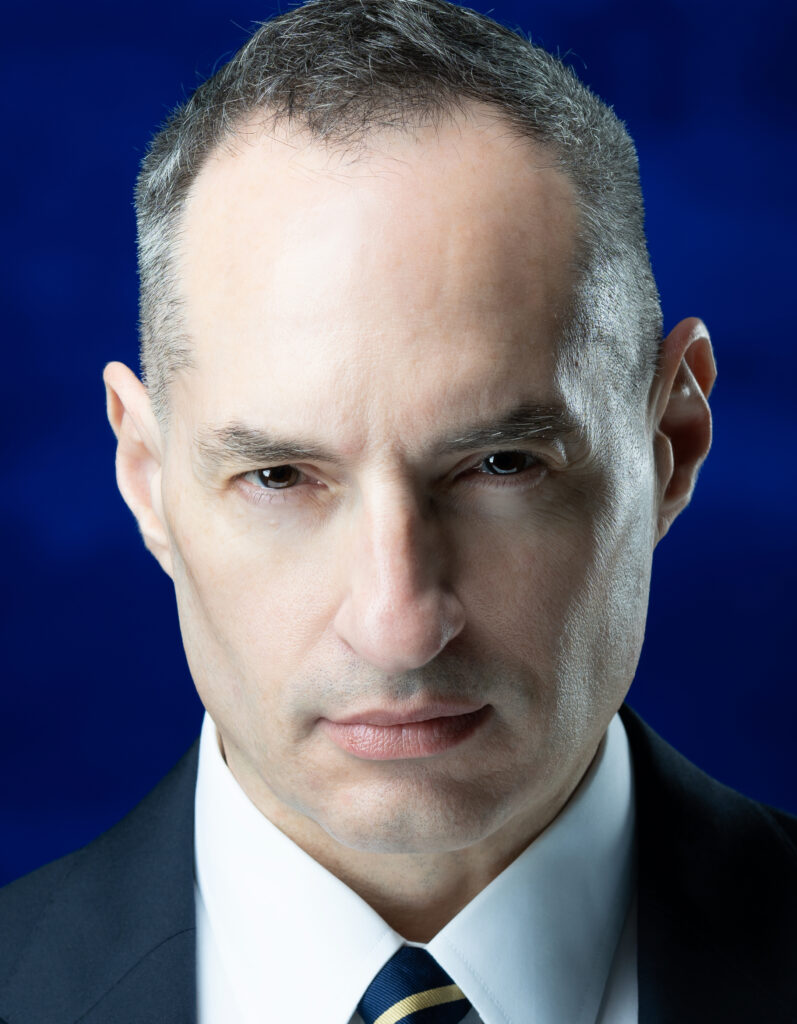
Despite Trump’s campaign pyrotechnics, it’s possible that any showdown will be much more temperate, the sort of state-federal legal conflict that’s been a constant in U.S. history.
“In some ways, the moment we’re in is exceptional,” said David A. Carrillo, executive director of the California Constitution Center at Berkeley Law. “But the basic principles are unexceptional. The battle over control of policy and power between the states and the federal government has always been with us. It’s been there since the founding of the republic. It’s not a bug — it’s a feature. It’s a design principle.
“Having the states and the federal government argue over policy decisions is essential to American government.”
The past is a guide to the future (maybe)

In trying to forecast the future, Carrillo and others said, the past offers a good starting point.
In Trump’s first term, from 2017 to early 2021, his administration initiated over 1,000 legal and policy actions on immigration alone, said Caitlin Patler, a sociologist at Berkeley’s Goldman School of Public Policy. Among them was the controversial ban on people from six Muslim-majority countries.
Ken Alex, director of Project Climate at Berkeley Law’s Center for Law, Energy and the Environment, offered another example: In his first term, Trump withdrew the U.S. from the international Paris Agreement on climate change, and he’s promised to do that again.
After that first-term decision, California joined New York and Washington state in pledging to uphold the accord within their borders. Meanwhile, California filed 122 lawsuits against the federal government, at a cost of about $42 million. Ultimately, Brady said, the state won about 80% of the cases. California also enacted policies to protect immigrants within its borders.
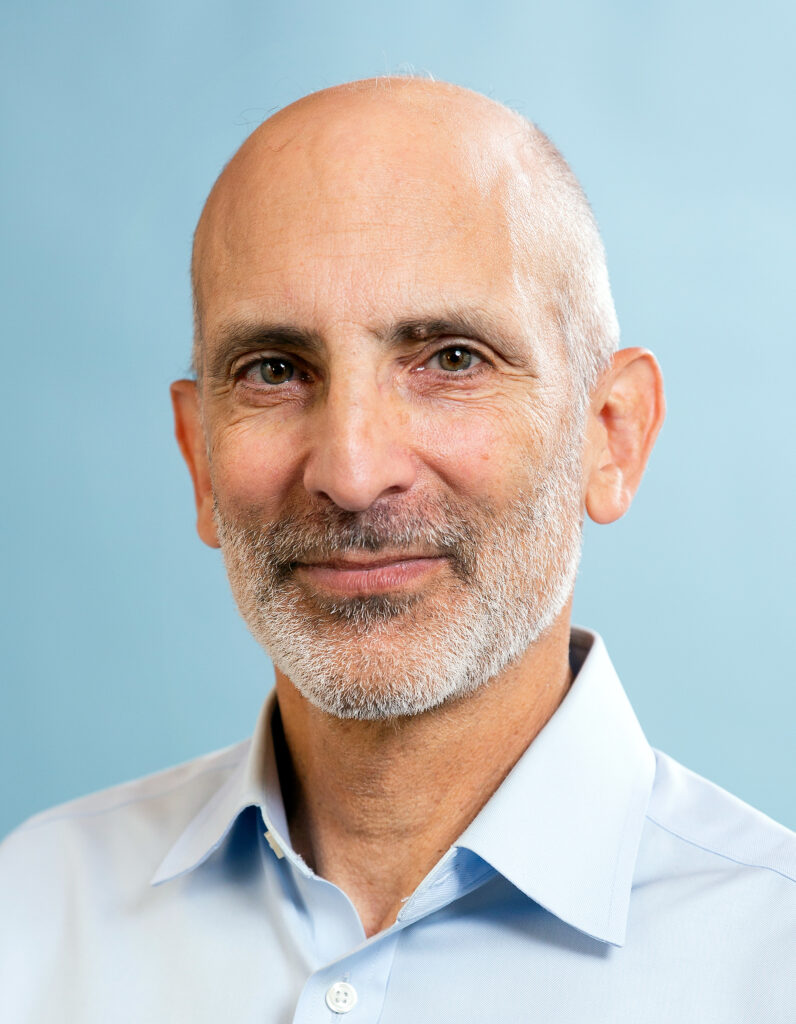
That past would seem to augur a new era of conflict fought out politically and in the courts. But Brady, former dean of the Goldman School and former president of the American Political Science Association, suggested Trump and his allies seem to be preparing for a more aggressive approach.
“I think they’re better organized,” he said, “and I think they’re more clear about what they want to do.”
Some potential plans are telegraphed in Project 2025, the controversial roadmap developed by top Trump allies to slash at programs perceived as liberal and at the foundations of government itself. For example, the report proposes tracking women who travel to California and other states for abortions.
Berkeley scholars detailed four areas, in particular, where the new Trump administration could have dramatic, and sometime dangerous, impact:
Public health: With Trump’s plan to nominate Robert F. Kennedy Jr. to the nation’s top health post, many experts are concerned that someone who traffics in vaccine conspiracies and distrust of public health institutions could undercut California’s existing health policies.

Federal health officials could cripple research by redirecting funding away from specific types of studies, said Arthur Reingold, a professor at Berkeley’s School of Public Health. They might appoint vaccine skeptics to key advisory bodies. Reingold said that would be consequential because state officials often rely on expert guidance from these committees when setting their own rules.
The federal government sends billions of dollars annually to states for initiatives ranging from childhood vaccines and health screenings to pandemic preparedness and response. Besides upending research and decision-making in Washington, an administration could withhold that funding in an effort to compel public health officials to change their rules.
“Bribing and coercion are often very persuasive methods,” Reingold said. “We shouldn’t underestimate the power of the federal money to influence or make things uncomfortable.”
Immigration: Trump and his allies have signaled aggressive efforts to limit immigration and deport millions of undocumented immigrants, and even some here legally. California contested those initiatives in Trump’s first term by, for example, strictly limiting local police cooperation with federal immigration agents.
But, Patler said, Trump’s supporters expect him to take forceful action, and he may decide to focus on California as a symbolic, but politically potent, attack.
“I anticipate the relationship to continue to be adversarial, at very least in the public relations arena,” she predicted. “They’ll probably engage in some high-profile raids, at great harm to local communities. They may do some of that in California. They may start here.
“Trump has some political capital that he gained from promising to do horrible things. And when I say horrible, I’m saying that because all the research shows that mass deportation is horrible for the economy, it’s horrible for communities, it’s horrible for schools, it’s horrible for children.”
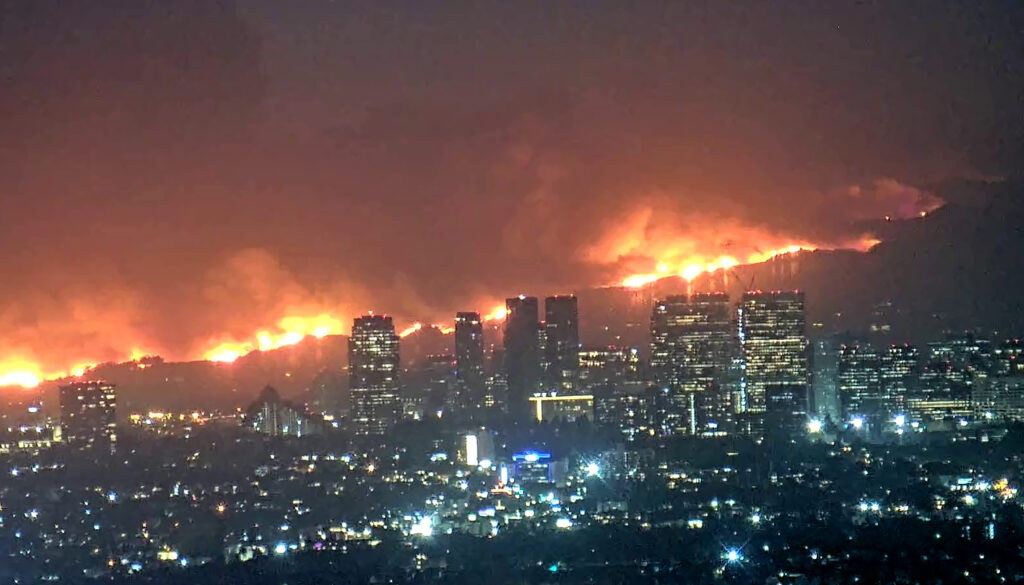
Toastt21 via Wikipedia
Climate change and environmental protection: Trump and his allies have promised “a war on climate change action” and “a campaign to promote fossil fuels” that cause climate change, said Alex, who spent eight years as a top environmental policy adviser to former California Gov. Jerry Brown. “That does translate in many ways as an effort to undercut what California has done and is doing, because California is, and continues to be, a leader in climate change action.”
“Is California going to give up its climate change goals and say, ‘No, no, that’s fine, we understand.’?
Henry Brady
California has broad authority under the U.S. Clean Air Act to set its own standards in areas such as tailpipe emissions. Those standards are often more strict than those that exist nationally, and they are influential in other states, other countries and throughout the auto industry.
But there’s a catch: To enact new air quality rules, California has to seek a waiver from federal law, Alex explained. Trump could refuse to grant those waivers.
The federal government could also use federal agencies to harass California and undermine its independence. Further, he said, the Trump administration could target federal funding for high-speed rail, water, ports and other projects.
Higher Education: John Aubrey Douglass, senior researcher at Berkeley’s Center for Studies in Higher Education, said Trump could create a “dystopian” future for colleges and universities in California and other states.
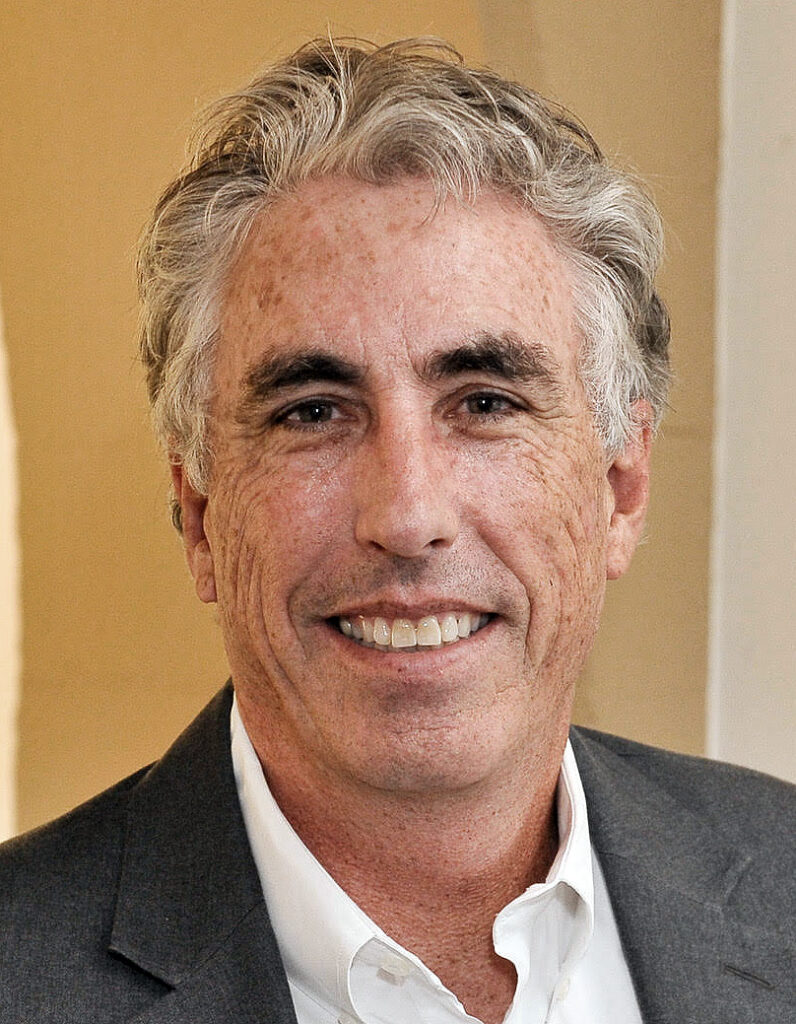
MAGA leaders are already raising grim possibilities: cuts in student aid and research funding, possible deportation of tens of thousands of students, and perhaps even efforts to impose more federal control over day-to-day campus operations, such as curriculum and faculty hiring.
Both Douglass and Brady see a risk to campus programs that support diversity, equity and inclusion.
There could be “tremendous funding cuts in anything that smacks of social science,” Brady said. “Social science will be thought to be ‘woke.’ And so the National Science Foundation, which supports a lot of the social science research, along with other funding agencies — that could all be gone.”
How far is Trump willing to go?
There’s a common theme in those issues: According to the experts’ analysis, Trump may elect to escalate the federal-state conflict to unprecedented levels, using funding cuts, administrative pressure and political muscle to break the state’s will.
After the election, Newsom made national headlines by calling a special legislative session to enact laws and financial allocations to “Trump-proof” the state. But as Newsom emerges as a national political opponent to the administration, and as he considers a 2028 run for the White House, Trump may have even more incentive to go to war.
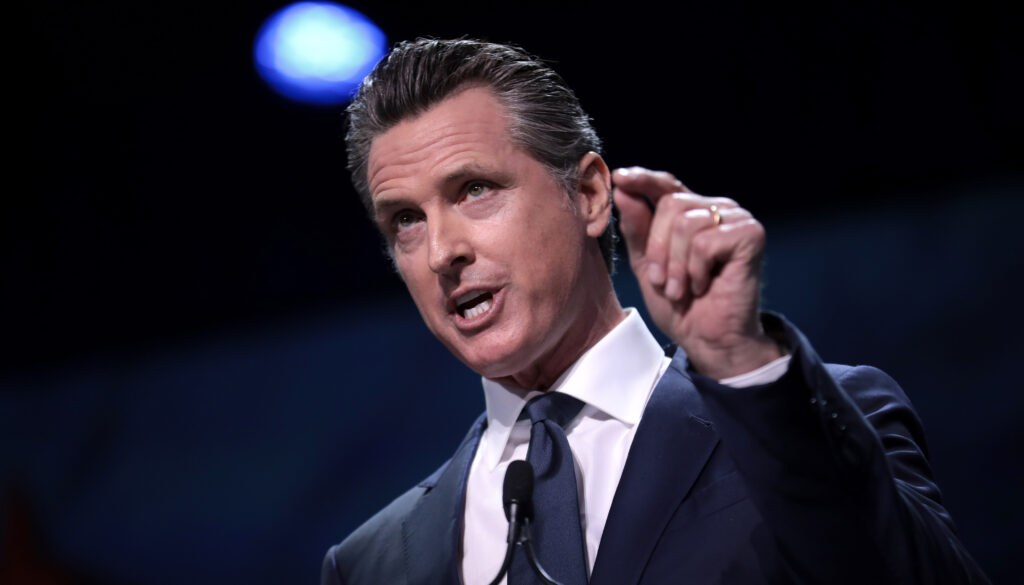
Gage Skidmore via Wikepedia
“This could lead to some really difficult things,” Brady said. “Is California going to give up its climate change goals and say, ‘No, no, that’s fine, we understand.’? Are we going to say to the federal government, ‘Sure, take away our Medicaid funding and we’ll beggar a large proportion of our population with respect to health care’?”
Billions of dollars will be at stake, Brady said, and state lawmakers simply don’t have the financial resources to replace lost federal funds. That may limit the state’s options for resistance.
California could be “put in a situation of having to make some very hard moral choices about what we can afford and who we can protect,” Brady said. “I’m sure the Trump administration would love to see us in those circumstances.”
Hurting California could hurt the nation
To be sure, the Berkeley experts stressed that strategic calculations are not cut and dried for either California or the Trump administration.
Trump may want to punish the state for its persistently pro-Democratic politics, or make an example of it to intimidate other blue states. But California accounts for 14% of the nation’s total economy — would he risk damaging that economy if the effects might ripple out to other states, both blue and red?
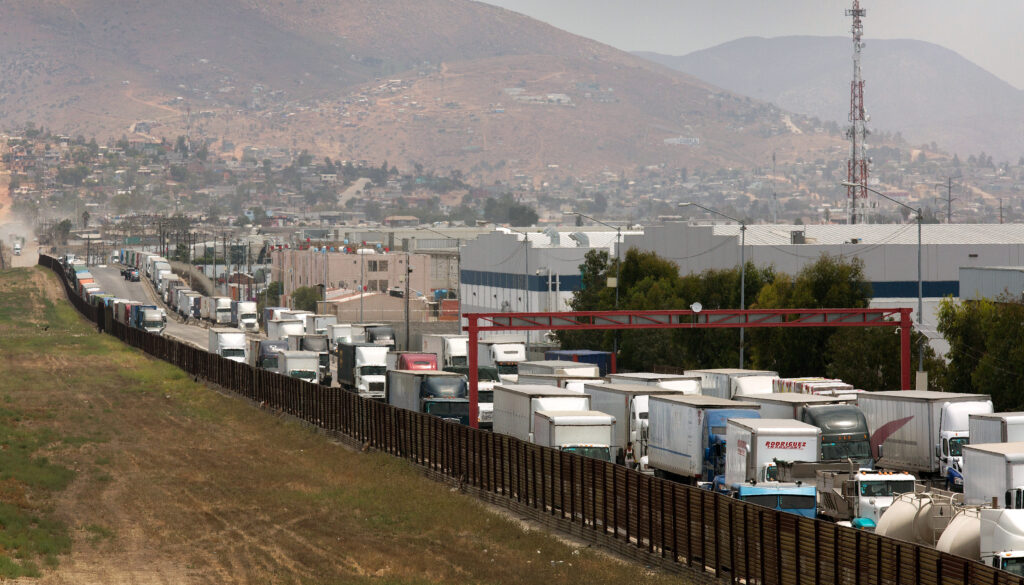
Photo by Glenn Fawcett, U.S. Customs and Border Protection, via Flickr
Or would he risk antagonizing the state’s major economic sectors — agriculture, for example, or technology, defense or manufacturing — that might be less blue than the rest of the state? That could be both economically and politically costly.
At the same time, the scholars said, California has a range of strategies to discourage Trump — strategies that are not about hunkering down, but about exercising and expanding its natural political and economic strengths.
California already has strong political and economic ties to other states on issues of climate and environment. And while the U.S. Constitution prohibits states from making treaties with other nations, California has a robust foreign policy, and its influence on economic, environmental and education policy extends deep into Canada, Latin America and the Asia-Pacific region.
Seeing the state as a protective shield
These factors and others raise the possibility that California and the federal government could settle into a sort of hostile equilibrium, a volatile balance of power. There would be tension, but much of that would play out in the courts, as state-federal conflicts usually do.
In which case, the scholars said, California would have some significant advantages. Generally, Carrillo explained, the U.S. Constitution reserves for states broad powers over policies that shape everyday life. On specific issues — education, for example, or crime and policing — California and other states have considerable latitude to set their own course.
“Much of the policy debate between the first Trump administration and a set of states was resolved in the courts,” Carrillo said. “If past is prologue, it’s reasonable to expect that something similar will happen again.”
While the Supreme Court seems much more sympathetic to Trump now, the courts operate slowly, and years may pass before disputes reach the justices.
And so, while anticipating a potentially chaotic and anxious time, Carrillo, Patler and others caution against doomsday narratives and unwarranted fear.
“People do need to prepare for the worst-case scenario — that’s what Trump has promised,” Patler said. “I’ve heard it from students who come from immigrant families — they’re scared for themselves and their families. And the situation is scary.
“But I assure them that the state has a lot of experience in this area now, and state policies are a protective wall. I believe that California has their backs.”